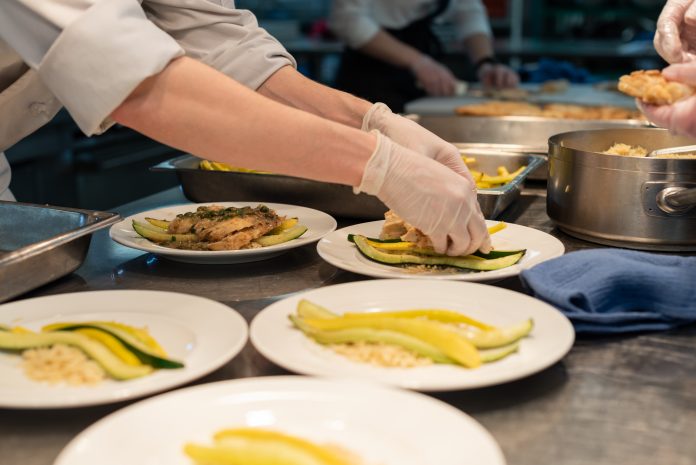
Daniel Moreira
Managing editor
Working in the service industry is common for college students. It is a fast way to make some money and it offers some experience, such as enhancing one’s people skills or ability to work under pressure. While some students work as servers for a period of their lives, most wish to move to on as soon as possible. For others, however, working in the food industry is just the beginning of a life-long career.
Apart from taking six-semesters of classes, students in the Chef Apprenticeship program must work at least 40 hours per week in a real-life kitchen, dealing with customers, other chefs, and constantly learning and having to improve.
Imagine having to participate in Hell’s Kitchen for 40 hours a week, while juggling classes, grades and a social life, but for the students in the Chef Apprenticeship program, it is just how life is.
Roman Fierro, student, has been a cook at Ça Va, a champagne bar in Westport, since Sept. 2018. He is part of the Chef Apprenticeship program and is the youngest at his restaurant. His shift starts at 2 p.m. and ends at 1 a.m.
“My restaurant is closed on Mondays, so I try to cram in all my classes on Mondays,” Fierro said. “If I take all my classes on Monday, then that means on days off at work, I can do my homework and at least study for next week. I don’t know if other kids have the same luxury as me, but I love it.”
Time and space slots are essential for Fierro’s well-balanced schedule. School can’t affect his job or his work quality, or vice-versa. He usually works in the food preparation line, having to grill meats, prepare salads and garnish plates. It is busy and enough to tire anyone, but not Fierro.
“I would assume that I would be tired, but I think that I’ve accustomed to it because I’ve [working there] since Sept.,” Fierro said.
Working with customers is a big part of Fierro’s job. Because Ça Va ‘s kitchen is open, customers often get to witness how their food is prepared. It is a way to keep chef’s accountable, but it leads to some different encounters.
“I’ve dealt with quite a few different scenarios,” Fierro said. “We’ve had people who aren’t customers come in and they start lifting [cheese plates] up and try to give it to people. I have to tell them ‘sir, please don’t touch that. That’s for the kitchen.’”
Fierro plans on moving on to another restaurant in the next spring semester. He believes that going into a different restaurant and working with other cuisines is good way to learn something new.
“As someone who is trying to become a chef, you don’t want to stay in the same kitchen all the time,” Fierro said. “You’re not going to learn anything. Even though menus change all the time, you’re not going to know the next recipe, the next kitchen or the next relationship you’re going to make.”
Maynor Gallardo Salgado, student, is part of the program as well. Salgado works at Jarocho South, a Mexican seafood restaurant. Unlike Fierro, Salgado had the luck to have his job work around his school schedule.
“It’s just a matter of finding a location that works around your schedule,” Salgado said. “I’ve met a lot of apprentices whose jobs don’t want to work with [their schedule], so they always end up dropping out.”
Salgado is a chef de partie, or a line cook, which means he is responsible for prepping ingredients and assembling dishes according to recipes and specifications.
“You always have a lot of stuff going on,” Salgado said. “It’s a matter of time management, organization and trying to work clean while you’re working fast.”
Though being a chef de partie can be difficult, Salgado sees the customer satisfaction as the best part about working in a kitchen.
Salgado said, “There’s a couple customers who have known me since I started cooking, they have my contact information, so they’ll always come and see me. The fact that I know that they are willing to travel for 30 or 40 minutes just to come see me and have me cook for them, that’s why you’re in the culinary program.”





















